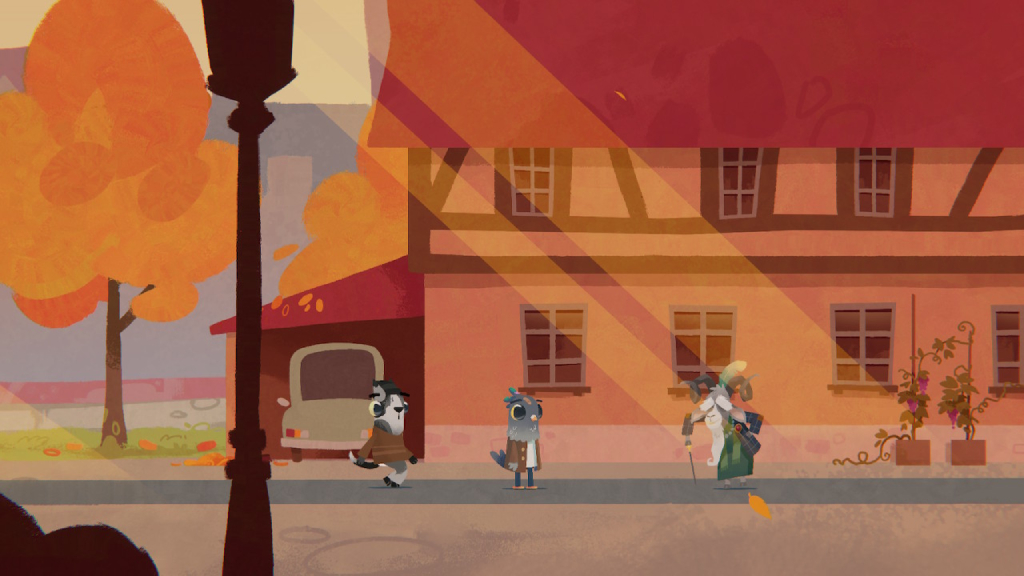Explore the trials and tribulations of a young doctor in a hospital ward in the Fall of Porcupine.
In a sea of infinite content, for an indie video game to stand out, a stroke of luck & a strong sense of narrative, art direction, gameplay, and music must all coalesce in the hopes of trying to arrive at its target audience. Each adventure, as unique as the people working behind them, can give you a personal and compassionate side of a life experience you had not previously thought of. On that note, a great story could also be hidden amid not-as-great mechanics and be its saving grace.
Recently showcased at the Wholesome Direct, an event entirely focused on bringing attention to hopeful video games with a distinctive art style, Fall of Porcupine rushed into the spotlight with its anthropomorphic and lovable animals. Developed by Critical Rabbit and published by Assemble Entertainment, Fall of Porcupine positions itself as an original story adventure set in a cozy small town full of adorable wildlife ready to receive a newcomer willing to put his life on the line for them.

Fall of Porcupine starts with a very peaceful veneer in its starting menu until you press New Game. Greeted by a warning message of a story dealing with stress, illness & death it is a far cry from the endearing and wholesome message it seemed to emanate. Nevertheless, it is a welcome respite that certain media nowadays give a heads-up to those of us that might be dealing with issues they would not want to be reminded of in a video game.
A thud, a distant hospital beep, and an anthropomorphic bird on a lab coat on a fading black screen are the first moments of Fall of Porcupine. After a series of dreamlike scenarios, Finley, as we now know the main character is called after talking to a plant, wakes up from a nightmare. He just moved to the city of Porcupine to start working as a junior doctor in the hospital St. Ursula’s, the best and only medical center in town.
As Finley shakes off his grogginess and starts walking towards the medical ward the idyllic city of Porcupine is revealed to the player in all its colorful and autumnal glory. As he walks by and engages in conversations with fellow neighbors and makes observations, Finley’s acidic remarks drive the idea that he is someone unfocused, young, and somewhat unsure of his job.

Thanks to a brief introduction to the staff and a scolding for arriving late, Finley’s rough morning starts with a worrying feeling. The cute residents of Fall of Porcupine, as in any other community, need fair care and treatment and this is when the main character’s journey starts. Thanks to a new app on his phone he is set to check in with three different patients, each with their symptoms and diagnosis.
This is where Fall of Porcupine employs a smart tactic to utilize charming imagery in the hopes players will be attracted and then openly discuss difficult subjects. As is expected, Finley must confront severe illnesses in his patients that as a young doctor fills him with dread and doubt. While Porcupine is a promising settlement the trials and tribulations of the everyday healthcare system can prove to be too much for even heartwarming animals.
The thrill of new beginnings is hard to shake off. Fall of Porcupine’s formula of having to repeat almost every single day with a routine and a minimal amount of change goes a long way in trying to hammer home its message of burnout. The simple gameplay elements, walking and exploring the little town, talking and walking back and forth from Finley’s apartment to his work shift and back endlessly is a tedious but necessary ordeal to properly convey the game’s ideas.

For Finley to administer his treatment, Fall of Porcupine decides to offer several minigames related to the patient’s needs. While they are the bread and butter of what could be considered the fun aspect of gameplay, some are unnecessarily complex or confusing. Thankfully, there is an option to simplify the gameplay of these minigames to focus entirely on the story.
One glaring issue is that there is a mouselike cursor in the middle of all menus, surely left there for the PC version of the game. That was not necessary to be there in the first place as it is impossible to use it or remove it in the Switch version. Certain guiding messages are in German instead of English, as well.
Although the map is not that large and everything is within walking distance, a fast travel option is only unlocked halfway through the game, and the constant loading screens are distracting in this day and age. A few accessibility features that should be highlighted are the text size, dyslexia mode, and color mode for people suffering from deuteranopia and other color-blindness symptoms.

The portrayal of burnout in a professional context is a tricky subject to grasp fully, mainly because of the tediousness of the whole matter. All jobs have a degree of menial tasks, but also the sense of urgency and consistency that means getting up in the morning and putting on your best face, and always treating patients as well as possible and regardless of how you feel about them is a commendable effort.
The people who work in healthcare have been particularly strained since the global emergency that occurred a few years back, and for a wholesome indie game to pay homage to their everyday efforts is something to be celebrated. Fall of Porcupine formidably shows the constant pressures of daily life, especially in a hospital setting.















